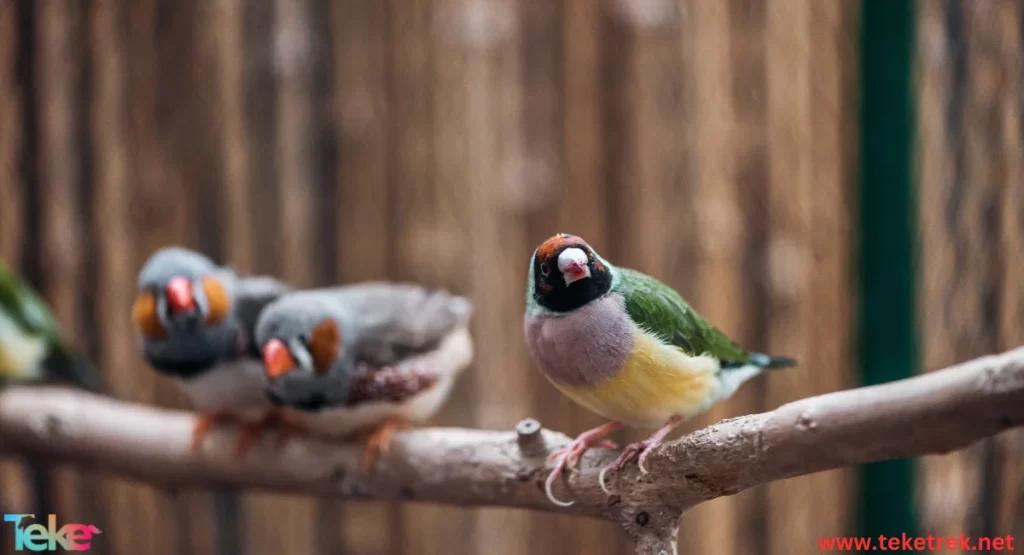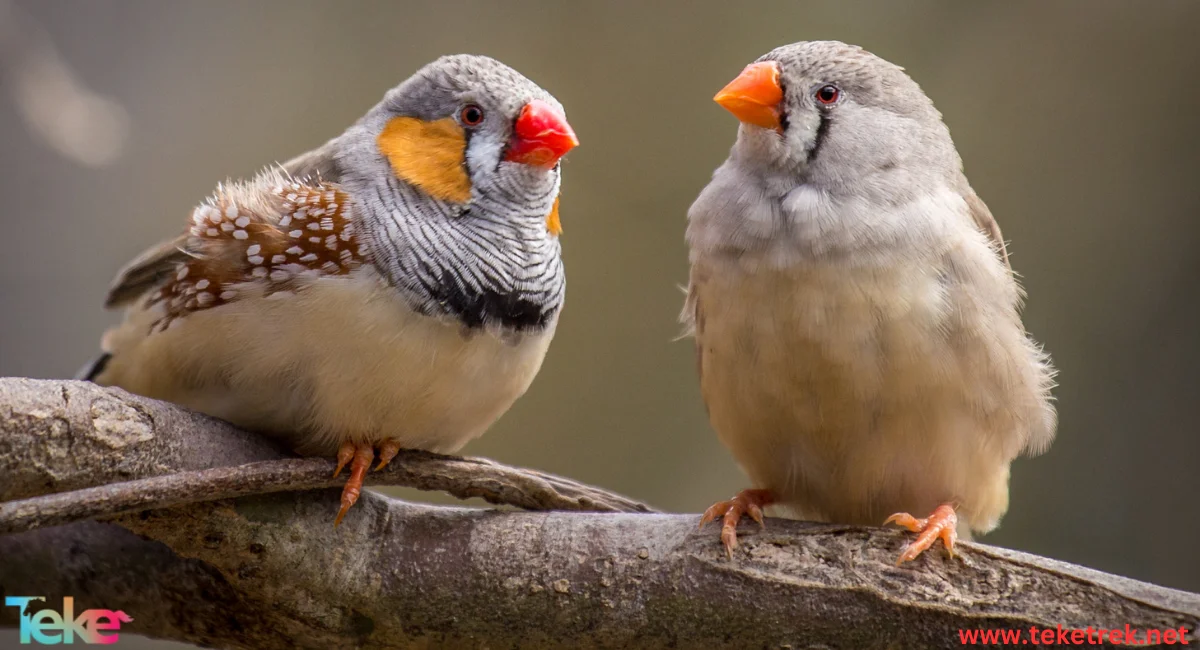Finches are a type of bird commonly found in North America, known for their vibrant colors and small size. They belong to the Passeriformes order and the Fringillidae family.
If you’re a bird enthusiast and want to learn more about these small creatures, keep reading the following article from teketrek.

Finches’ Characteristics:
Finches are distinguished by their long, brown tails and striped wings.
They typically have soft gray feathers with red eyes.
Finches have bright orange beaks.
Male finches have black “mustache” markings, thin black lines extending on the sides of their beaks. The area between the mustache and tear marks is usually white.
Their tails feature more prominent black and white stripes. They also have chestnut-brown feathers with white spots on their sides.
Female finches are almost entirely gray and do not sing like males.
When finches are young, they all appear female except for their black beaks instead of orange. Their adult colors develop when they reach about 2 to 3 months old.
Finches’ Habitat:
Finches are found in southern Canada, the United States, and Mexico.
These birds are primarily permanent residents throughout their range, but some northern and eastern groups migrate southward.
They inhabit urban and suburban areas as well as many semi-open areas from southern Canada to the Mexican state of Oaxaca in the west.
Finches’ Habits and Lifestyle:
Finches are active during the day, often spending time in groups or small flocks.
They primarily feed on the ground or within vegetation cover.
Communication among finches relies on visual cues and sounds. Their song is a rapid and cheerful chirping or a diverse set of tweets.
Male finches sing during courtship, while females are involved in nest building and during the incubation period.
Diet of Finches:
Finches are primarily herbivores, feeding mainly on grains, seeds, and berries. They are particularly fond of weed seeds such as dandelions and thistles. Occasionally, finches may consume small insects like aphids.
Reproduction in Finches:
Finches are monogamous and form pairs.The breeding season ranges from March to August.
Female finches are typically attracted to males with deep red plumage on their heads.
During courtship, the male finch touches beaks with the female.
Male finches feed the female during nesting, egg incubation, and chick rearing, serving as the primary feeder for the chicks.
Finches nest in cavities, including openings in buildings, hanging plants, and other external decorations shaped like cups.
Nests are well-made from twigs and debris, forming a cup shape. They are usually positioned at heights ranging from 1.8 to 2.7 meters.
Females may produce two or more broods annually, with 2 to 6 eggs per clutch, most commonly 4 or 5 eggs.
The eggs are characterized by their pale blue-green color with a few black speckles. They have a somewhat smooth and glossy surface.
Incubation period lasts from 12 to 14 days and is performed by the female.
Hatchlings have pinkish coloration with closed eyes and downy tufts.
Female finches always feed the young, often accompanied by the male.
Before fledging, chicks often climb onto nearby plants and typically mature after about 11 to 19 days from hatching.
Dandelion seeds are among the favorite foods of the chicks, and they primarily feed on plant material.

Frequently Asked Questions about Finches:
- How should finches be kept?
It’s best to keep finches in pairs or small groups. If one bird needs to be housed separately due to illness, ensure that it can see another bird at least in the same room. Finches enjoy flying and require a spacious cage to allow them plenty of opportunities to exercise their wings.
- Are finches quiet?
Finches are not among the quietest birds, as they make frequent calls to communicate with each other. While these birds generally get along with each other most of the time, overcrowding, stress, or competition for females may lead to males fighting by pecking at each other’s beaks. Overall, finches tend to be peaceful birds and can coexist with other bird species in the same cage.
- How long do finches live?
Wild finches typically live for only two to three years. Pet finches, however, can live from 5 to 15 years.
- What is so special about finches?
Finches are notable for their vibrant colors, diverse species, and unique beak shapes adapted for various diets. They exhibit fascinating behaviors such as elaborate courtship displays and intricate nest-building techniques.
- Are finches good to have around?
Yes, finches are generally beneficial to have around. They play a role in controlling insect populations by feeding on them, particularly during the breeding season when they may consume more insects to feed their young.
- What does a finch symbolize?
Finches symbolize adaptability, resilience, and diversity in the natural world.
In conclusion, as we explore the world of finches, we realize the importance of protecting this beautiful and unique creature. The finch symbolizes the grandeur of evolution and the adaptability of living organisms to their changing environment. With its presence on the brink of extinction, immediate action must be taken to protect its natural habitat and preserve biodiversity in the Galápagos Islands. Let us draw inspiration from the story of the finch, highlighting the importance of conservation of ecosystems and moving forward with a spirit of responsibility and care.
Sources:
https://www.britannica.com/animal/finch





